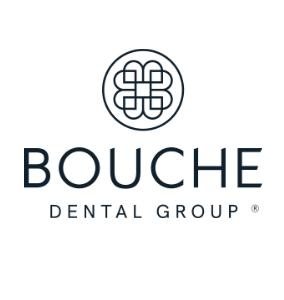Children, just like adults, can have dental problems. That is why some professionals are trained in pediatric dentistry, the area dedicated to oral treatment of children (from babies to adolescents).
The paediatric dentist will take charge of prevention, early diagnosis and dental treatment (caries lesions, accidental trauma, etc.). The first consultation can be carried out as soon as the baby’s first tooth erupts or at the latest at the age of 1 year. After the first visit, regular visits to the professional every 6 months are recommended.
As children are very sensitive to visits to the dentist, a successful first visit is crucial for establishing a trusting and cooperative professional-child relationship and for avoiding a phobia of the dentist later on.
With a professional and playful approach, paediatric dentists will make the child aware of the correct dental hygiene gestures and reassure him/her during treatments.
Paediatric dentistry is the branch of dentistry that looks after the oral health of children.
Today we know that the great fear adults have of facing the dentist’s chair is due to the negative experiences they had as children. For this reason, the work of the paediatric dentist is so important.
Paediatric dentistry is a branch of dentistry that treats different oral diseases from early childhood to the end of growth.
Therefore, the paediatric dentist will be responsible for exploring the child’s oral cavity and detecting possible abnormalities in the primary dentition (milk teeth), as well as applying an individualised procedure and treatment.
The aim of paediatric dentistry is to prevent children from suffering more serious problems as adults.
During their childhood, parents or guardians, with the help of the dentist, are responsible for transmitting correct hygiene habits to the child to ensure healthy oral health in the future.
First visit to the dentist
It is recommended that children’s first dental check-up takes place when they are one year old. Here, the professional will check the growth of the maxilla and mandible, the correct eruption of teeth and exclude the presence of pathologies such as caries.
In addition, parents can receive information about how to ensure that their children acquire proper oral health, solve doubts about hygiene and tooth brushing, as well as questions related to certain practices which can be harmful for the correct oral and dental development of the child.
The phase from 0 to 3 years of age is considered preventive. If there is no problem, an annual visit is recommended. However, from 5 years of age onwards, during the replacement period, it is advisable to have a check-up every 6 months.
Eruption of the milk teeth
The teeth, which form from the fifth week of gestation, generally appear from the sixth month of life and form the first milk teeth, which are complete at approximately two and a half years of age.
When the tooth is ready to erupt, the gums are normally inflamed, which can cause some discomfort in the baby: irritability, fever, increased salivation, refusal to eat, diarrhoea or nappy rash.
For babies who show symptoms of pain when their teeth erupt, there are very effective methods that will help in the relief of pain, such as the use of dongles or other utensils existing for the same purpose or even rubbing the gums lightly with a clean finger.
Oral hygiene for children
When the first teeth appear, they should be cleaned with gauze. When the molars erupt, this is the moment when the child can use a toothbrush that corresponds to its age.
The brushing technique requires a certain skill. That is why parents should help their children to brush their teeth. Although from the age of 5 the child can do it alone, it is essential that parents watch over him and guide him if he needs it. Direct supervision is recommended until the child is 6-7 years old.
Teeth should be brushed after every meal and always before going to bed. From the beginning, a fluoride toothpaste should be used.
Under 3 years of age, only the bristles of the toothbrush should be scraped into the toothpaste (put paste the size of a grain of rice). Between 3-6 years of age, toothpaste should be used in small amounts (the size of a pea).
From the age of 6 years, toothpaste the size of a chickpea is recommended. There are toothpastes for children, although the most recent scientific evidence shows that their usefulness is very limited, so it is advisable to use toothpaste of at least 1450ppm (1000 parts per million) at all ages, varying only the amount used, as mentioned above.
Thumb sucking and dummy use
There is evidence that the use of a dummy reduces the incidence of sudden infant death and is a pain reliever for painful processes experienced by the baby. However, it can cause malocclusions if its use is prolonged beyond the age of three years.
In terms of dentition, the dummies are related with the development of the upper crossbite, increase of the protrusion, palate constriction and with the anterior open bite; a problem that eventually is solved when it’s use is abandoned in time.
In the case of thumb sucking, the effects on oral health can become more serious if it is not stopped in time: it alters the orientation of the arches causing crossbite, open bite, constriction of the palate, insufficient development of the jaw and changes in language.
Most common pediatric dentistry diseases
Dental caries : Caries is the most common chronic disease in childhood, with a high prevalence in preschool age. This infectious pathology is caused by bacteria that feed on the high consumption of sugars. It has serious repercussions on the child’s health, including: severe pain, facial infections, and emergency visits to the professional. The reasons are generally related to poor oral hygiene, breast or bottle feeding and frequent ingestion of carbohydrates.
Dental trauma : Trauma and accidents are very common among children and young people, and are one of the most unpleasant experiences for children and their parents. There are different types of dental injuries caused by trauma, some of which can affect the formation of the permanent dentition. The most advisable procedure is to immediately go to a consultation with a professional to examine the child and apply the most suitable treatment.
Pediatric Dentistry treatments
- Fissure sealants. In order to protect children from dental caries, this method is used to fill the fissures on the surface of the teeth to prevent the retention of food residues in these areas and consequently the appearance of caries lesions;
- Pulpectomy. Pulpectomy is a treatment similar to endodontics which is carried out on adults, but in this case carried out on milk teeth;
- Restoration. This is the filling of the cavity caused by the caries lesion with an appropriate material. These caries lesions, when left untreated, advance very quickly and can cause pain and even abscesses;
- Fluoride application. This method is used to strengthen tooth enamel and prevent tooth decay;
- Orthodontics. This treatment is carried out to correct changes or anomalies in bone or dental development that may exist in the child’s oral cavity.
Sedation in pediatric dentistry treatments
The aims of sedation in paediatric dentistry cover both the needs of the individual and the needs of the paediatric dentist. In the case of children, the aim is to reduce fear and pain perception during treatment, while for the specialist, the aim is to facilitate and expedite necessary treatments by minimising stress and uncomfortable sensations.
It is important to mention that, contrary to what occurs with general anaesthesia, in conscious sedation, the child’s verbal contact and reflexes are maintained.



